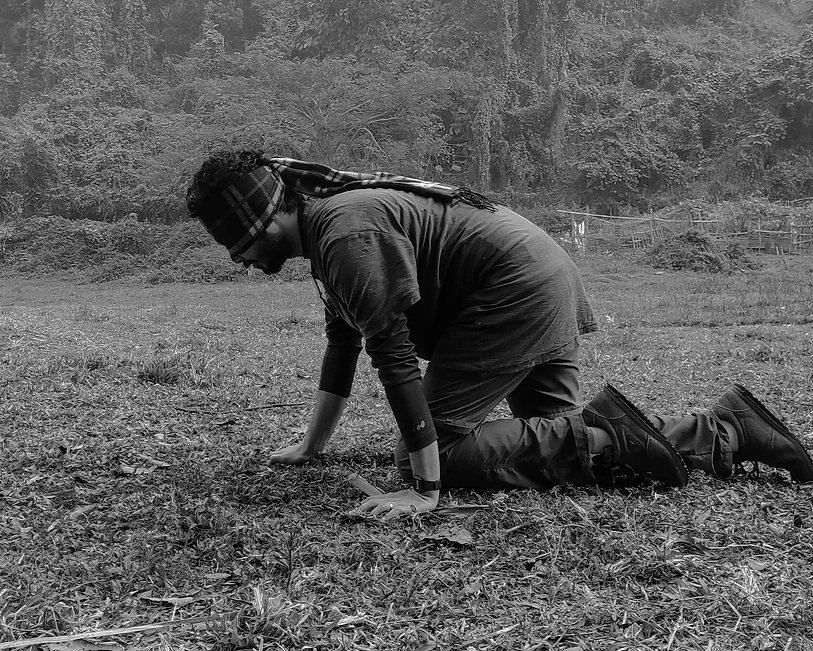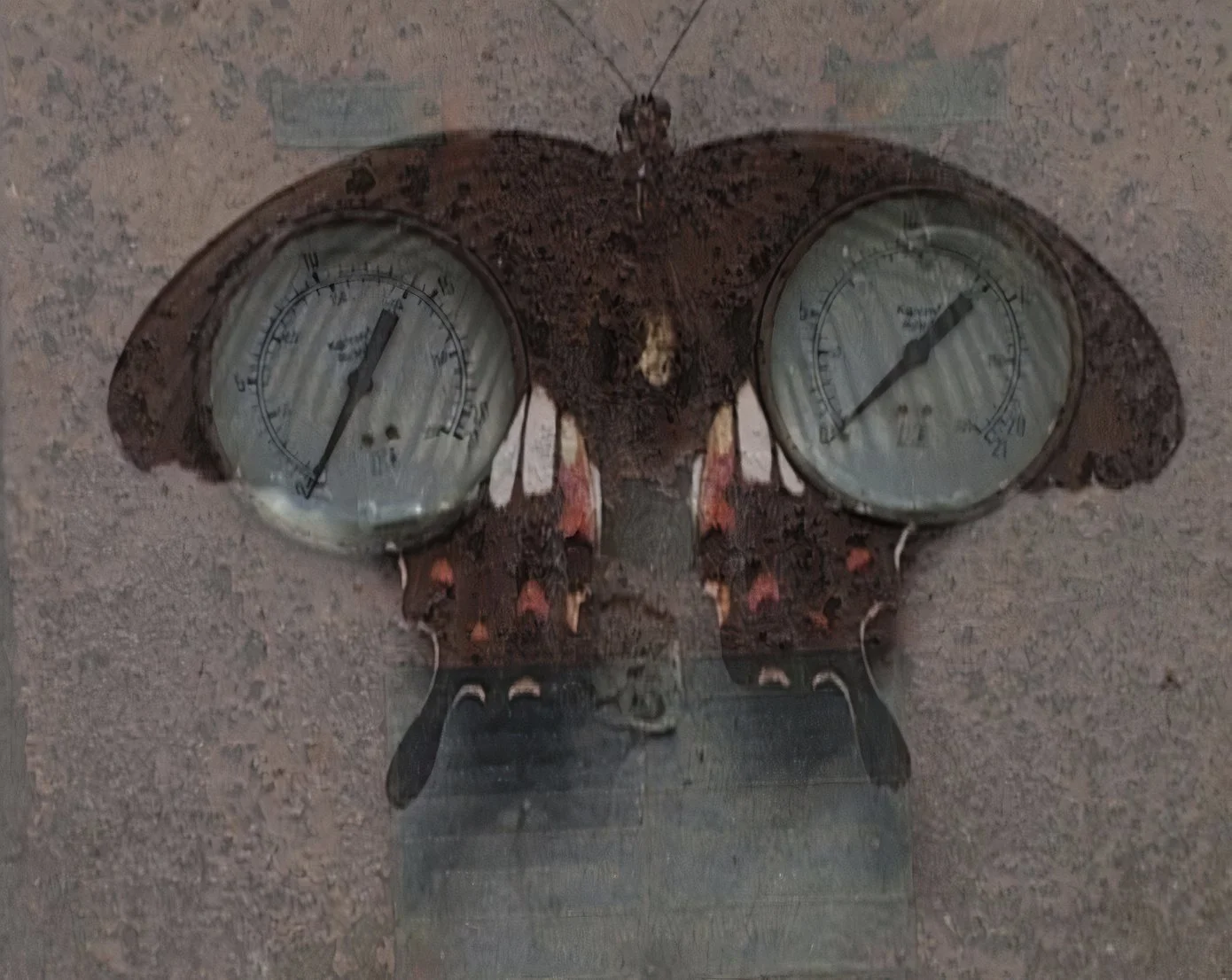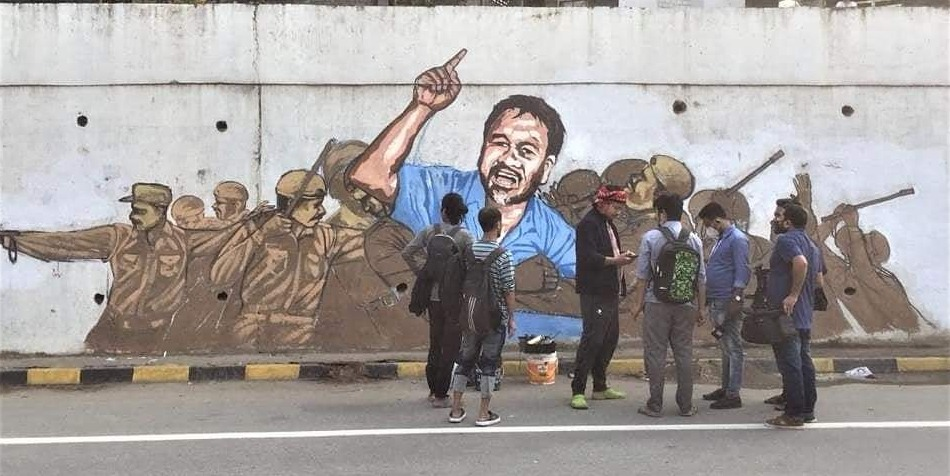Art and Ecology: Listening to the voice of art collectives in Assam
Biography of Forest. Source: Gathan Art Collective
How recently-formed collectives in Assam have focused on the socio-political and ecological issues of the state, and initiated a new public imagination through engagement in arts.
There tend to be wildly polarising perspectives of Assam. From those on the outside, the state is often viewed as a deviant and exotic land. This exotic lens gets even more blurred with its perpetual otherness and isolation. The lack of connectivity from the rest of India is what contributed to the state’s remoteness. Before the setting up of the first railway line in Assam in 1881, the river Brahmaputra kept the state connected with the rest of the country. Since the establishment of Calcutta-based British-owned river transport company in1844, and the River Steamer Company in 1867, the river has served as internal waterways connection from Brahmaputra in Assam to Allahabad via Calcutta and Patna through the Ganga. Eventually these companies merged and came to be known as Joint Steamer Companies. Even after partition, when the region lost her direct link with the rest of the country, the riverine route served as a connection between Calcutta and Assam, via the former East Pakistan.
For years, the river has served its inhabitants through fisheries and agriculture in its alluvial soil. However, the river has a life of its own. Despite its tremendous potentiality for sustenance, the Brahmaputra continues to destroy several lives every year, causing floods, erosion and standing crops.
Residue, 2011, 35mm color film with sound, 39 mins, looped. Source: Asia Art Archive in America
The river and its history continue to influence local cultural by-products. These histories of navigation through the river; the boatman’s song and miseries caused every year by floods never quite left the collective consciousness. A contemporary exemplar would be Rima Das’s movie Village Rockstars which visualises the problem of harvests being destroyed by the flood. While a less contemporary rhetoric of this dual relationship between the river people and its people is how the art collectives in Assam have been responding to it.
Art collectives in Assam—which started emerging as a greater force from the early 2000—have been playing a significant part in working their way out of this disadvantaged position as a community. Collectives throughout history have worked towards a common vision along with amplifying each of its member’s voices. They can also serve the purpose of creating a physical and metaphorical space for artists to find a community. Until a new generation of artists from Assam started practicing in the state, interactive art practices in public spaces were mostly non-existent here. These recently-formed collectives have been focusing on the socio-political and the ecological issues of the state, along with initiating a new public imagination through engagement in the arts.
The riverine art
A deep dive into the works by the Art Collectives in Assam helps us understand their transformational work, which remains unfettered by political boundaries. The Desire Machine Collective (est. 2004), based in Guwahati and formed by Sonal Jain and Mriganka Madhukaillya, works on the recurring themes of space-time, constructivism of memory and response to the terrain. Periphery (2007), a site-specific project on an abandoned ferry docked on the Brahmaputra, converted a dysfunctional space into a hybrid alternative for researchers and artists from all over the world to share ideas through workshops, residencies and seminars. This project explores the transient nature of the river; narrating stories of everyday life, documenting personal rather than political history of the river shared across its two peripherals, namely North and South Guwahati. The river and its relationship with energy, food and living encompassing experiences of humans is a vital part of this project.
Trespassers will (not) be prosecuted an audio installation work by Desire Machine Collective, consisting of sounds from a ‘sacred forest’ in Meghalaya and explores the realm of dematerialisation. False memories (of a forest) are instilled in the audience’s mind; the work continues to have a life long after the installation is over. This soundscape was installed in a public space with subliminal notions of memory, ecology, and geography experienced aurally, thereby reclaiming it and rendering it dynamic. It acts as an intangible intervention into time and space. By installing it on the Deutsche Guggenheim's façade, the Desire Machine Collective asked whether sound can be regarded as a material thing. According to local belief, it is forbidden to take out any object from Meghalaya's sacred forest. The 39-minute film Residue was shot at a power plant near Guwahati that was abandoned for 30 years. The power plant has been gradually being swallowed up by the surrounding forest. This project aims at the dynamics between machinery, nature and the relationship between images and how they are perceived.
Discussions on the magnificence of the river Brahmaputra and its dynamicity feeding into man, nature, machinery and memory continue to be echoed into the public imagery through the podcast Living with the River. A performance arts collective and multidisciplinary arts centre Agora-The Space—established in 2019—hosts this podcast, initiated by Radhika Goswami and Vedika Pareek, where interviews with artists and researchers on their relationship with the Brahmaputra have served as an audio archive on the narratives of the river. The podcast has addressed a number of themes including Shalim M Hussain’s work on people-river relationship of the resident’s char areas, or about the filmmaker who documents the lives of those whose livelihoods are entrenched with the river. In one episode, the hosts interviewed Shilpika Bordoloi, who choreographed and performed a piece titled Majuli, a physical representation of her feelings for the largest river island in the world situated in the Brahmaputra.
Mural of Akhil Gogoi in Guwahati Photograph (2020). Courtesy: Anga Art Collective
Discourses of the land along the river
While the river never left the cultural psyche of the state, the land along this majestic river has its own politics, which too doesn’t move further from the psyche. Collectives in Assam work on the politics of forest and agricultural politics. Art contributes to political discourses in its descriptive, interpretive forms and as vehicles to transcend the political discourse itself. When we take into consideration the participatory projects in photography, graffiti, street or open access art and processes which blur genre boundaries, they make us question this liminality of an artist vs. citizen. Works of the Anga Art Collective, established in 2010, reminds us of the concept of ‘citizen artist’ by Frank Moller, which describes an equalised emphasis on “being an artist” as well as “being a citizen”. The collective strives on a larger goal of Art as Activism, and uses medium such as installations and painting murals in remote regions of Assam or holding spaces of conversations to engage with the socio-political. Anga Art had been using murals as a form of expression since its inception; however, in 2020 their mural of Akhil Gogoi—a peasant leader and RTI activist from Assam—received particular controversy under charges of vandalising government property.
These multi-genre art communities and their works celebrate politics, history, migration, violence, tradition and the all-encompassing relationship with the river. The collectives in Assam are pregnant with the voice of dissent, too—one that is especially urgent for our times.
When the collective’s mural of Akhil Gogoi was erased, Anga’a members spoke to VICE India (2020) stating that this incident was an “example of authoritarian, fascistic practices invading the artist’s studio space (the public space as art studio)”. It is important to note that this mural was made in support of Gogoi’s voice during the anti-CAA movement in Assam and his consequent arrest under provisions of UA(P)A.
Beyond their dialogue on the political states of being, works on the man-nature conflict and relationship have been equally important part of Anga Art’s practice. In performance art piece Lines flow from Heaven to Earth by Anupam Saikia—a former member of Anga Art Collective—the artist recollects his observation of everyday landscape and reflects on increasing land erosion due to urbanisation. The artist used two Assamese poems by Nilomoni Phukan that speak on the juxtaposition of the land narratives and present-day realities.
The Gathan Art Collective, established in 2019, creates spaces of discussion and learning taking inspiration from the forest and the river. In Biography of the Forest (2021) members of the collective sat in the Garbhanga Forest as part of their project. The collective in collaboration with artist Dharmendra Prasad spent three days in mindfulness with the forest and artistic reflexivity. The project was created with intent to understand nature and its ways of being—without human interference
These multi-genre art communities and their works celebrate politics, history, migration, violence, tradition and the all-encompassing relationship with the river. It’s an artist’s job to respond to their environment and the artist community in Assam has been doing exactly the same. The collectives in Assam are pregnant with the voice of dissent, too—one that is especially urgent for our times.
***
Jahnabi Mitra is a psychologist and an independent researcher from Guwahati, Assam. She is currently pursuing her PhD in Psychology at Ambedkar University, Delhi. Previously, she worked as a faculty member in the Department of Psychology at the Assam Royal Global University. You can find her on Instagram: @jahnabi_m.



